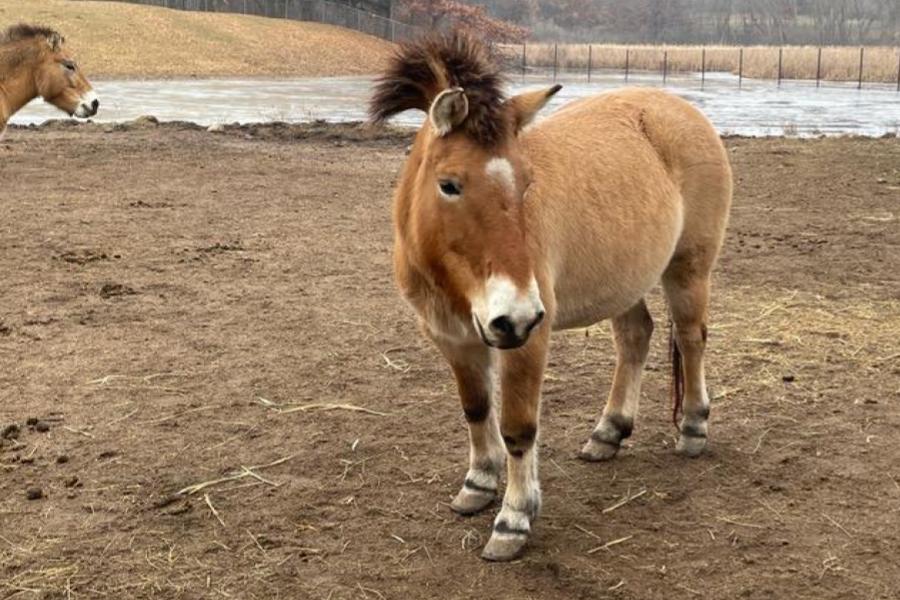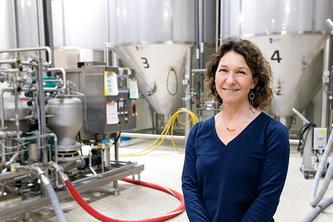
University of Minnesota researchers have successfully mapped the complete genome of the endangered Przewalski’s horse. Once extinct in the wild, the species now has a population of around 2,000 animals thanks to conservation efforts.
The study, published in the journal G3, was led by Nicole Flack and Lauren Hughes, researchers at the College of Veterinary Medicine, along with Christopher Faulk, a professor in the College of Food, Agricultural and Natural Resource Sciences. U of M students contributed to the genome sequencing through Faulk’s animal science course.
“The genome is the basic blueprint for an animal and tells us what makes a species unique and also tells us about the health of a population," said Faulk. “My students worked together to produce the highest quality Przewalski’s horse genome in the world.”
Researchers can now use this as a tool to make accurate predictions about what gene mutations mean for Przewalski's horse health and conservation.
“Studying genes without a good reference is like doing a 3 billion-piece puzzle without the picture on the box,” said Flack. “Przewalski's horse researchers studying mutations in an important gene need a good reference picture to compare their puzzle with.”
Researchers used a blood sample from Varuschka, a 10-year-old Przewalski’s mare at the Minnesota Zoo, to construct a representative map of genes for the species. The Zoo has long been active in Przewalski’s horse breeding and management, with over 50 foals born since the 1970s.
“We were excited to partner with the University of Minnesota to preserve the genetic health of the species as their populations continue to recover, both in zoos and in the wild,” said Anne Rivas, doctor of veterinary medicine at the Minnesota Zoo. “We are thrilled to offer our community the opportunity to see the horse as the results of our conservation efforts.”
The cutting-edge technology sequencing used to construct the genome uses a small machine about the size of a soda can. Its portability means this method could be adapted for further study of wild Przewalski's horses in remote locations.
Future applications of the reference genome may include studying genes that help the horse adapt to environmental changes, identifying mutations associated with specific traits or diseases, and informing future breeding decisions to help improve upon genetic diversity. Given the extreme population bottleneck that occurred during the near-extinction of Przewalski’s horse, such understanding is crucial for continued breeding efforts.
This work was supported by the NIH Office of the Director, the National Institute on Aging, the Norn Group, and USDA-NIFA.
-30-
About the College of Veterinary Medicine
The University of Minnesota College of Veterinary Medicine affects the lives of animals and people every day through educational, research, service, and outreach programs. Established in 1947, the University of Minnesota College of Veterinary Medicine is Minnesota’s only veterinary college. Fully accredited, the college has graduated over 4,000 veterinarians and hundreds of scientists. The college is also home to the Veterinary Medical Center, the Veterinary Diagnostic Laboratory, the Leatherdale Equine Center and The Raptor Center. Learn more at vetmed.umn.edu.
About the College of Food, Agricultural and Natural Resource Sciences
The University of Minnesota’s College of Food, Agricultural and Natural Resource Sciences (CFANS) strives to inspire minds, nourish people, and sustainably enhance the natural environment. CFANS has a legacy of innovation, bringing discoveries to life through science and educating the next generation of leaders. Every day, students, faculty, and researchers use science to address the grand challenges of the world today and in the future. CFANS offers an unparalleled expanse of experiential learning opportunities for students and the community, with 12 academic departments, 10 research and outreach centers across the state, the Minnesota Landscape Arboretum, the Bell Museum of Natural History, and dozens of interdisciplinary centers. Learn more at cfans.umn.edu.
- Categories:
- Science and Technology
- Animals




